An Overview of the Benefits and Drawbacks of VR in Education
VerifiedAdded on 2023/06/10
|8
|487
|62
Presentation
AI Summary
This presentation offers an overview of the use of virtual reality (VR) in education, highlighting its increasing popularity as an innovative educational tool. VR provides interactive computer experiences that can make learning more engaging and break the monotony of traditional educational systems. The presentation outlines the benefits of VR, such as improving student attention and facilitating better learning outcomes. However, it also addresses potential disadvantages, including the risk of distracting students from the core educational content and the potential for misuse of the technology. The presentation concludes that VR has the potential to significantly improve education by engaging students in learning activities more effectively.
1 out of 8
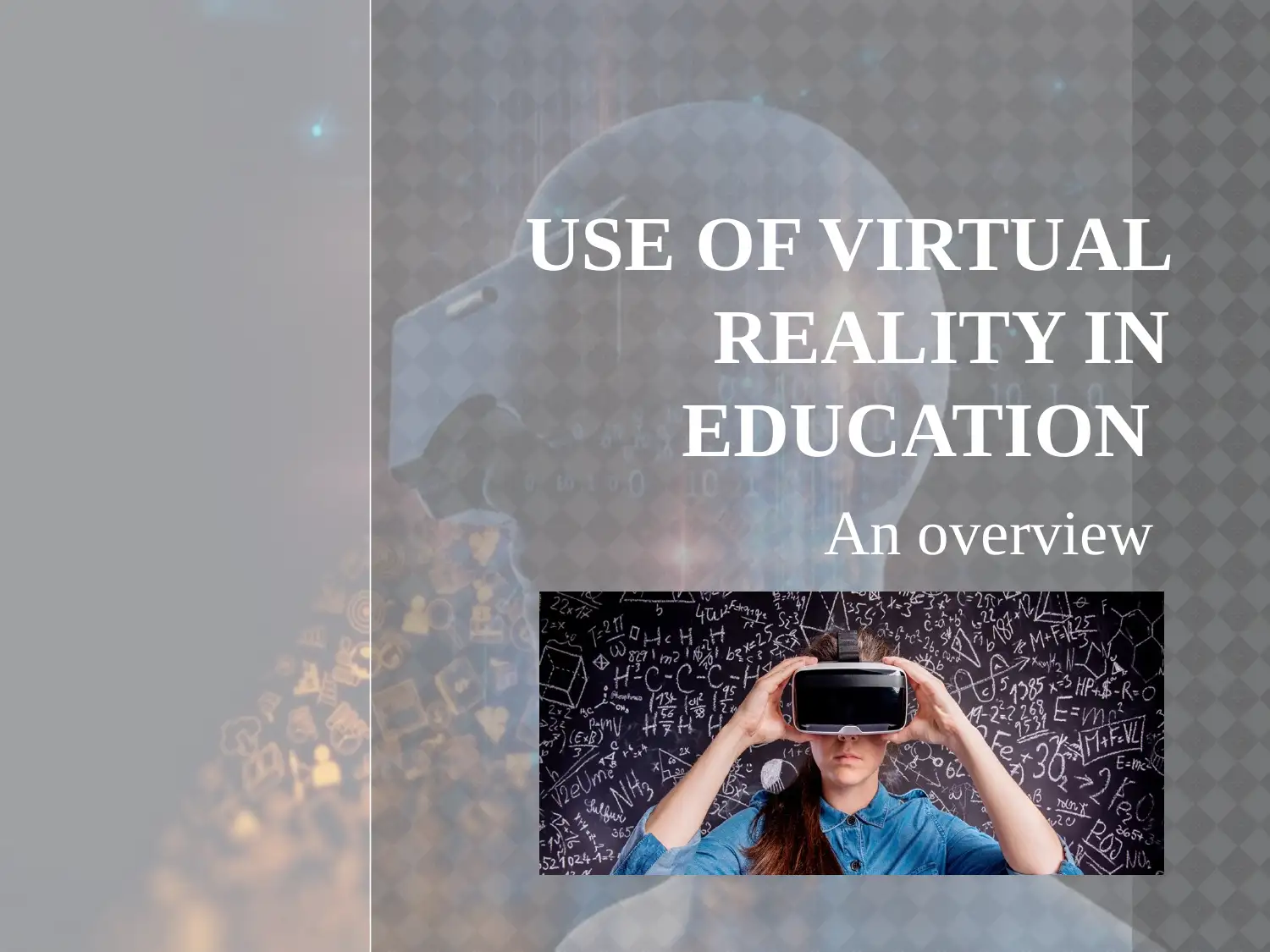
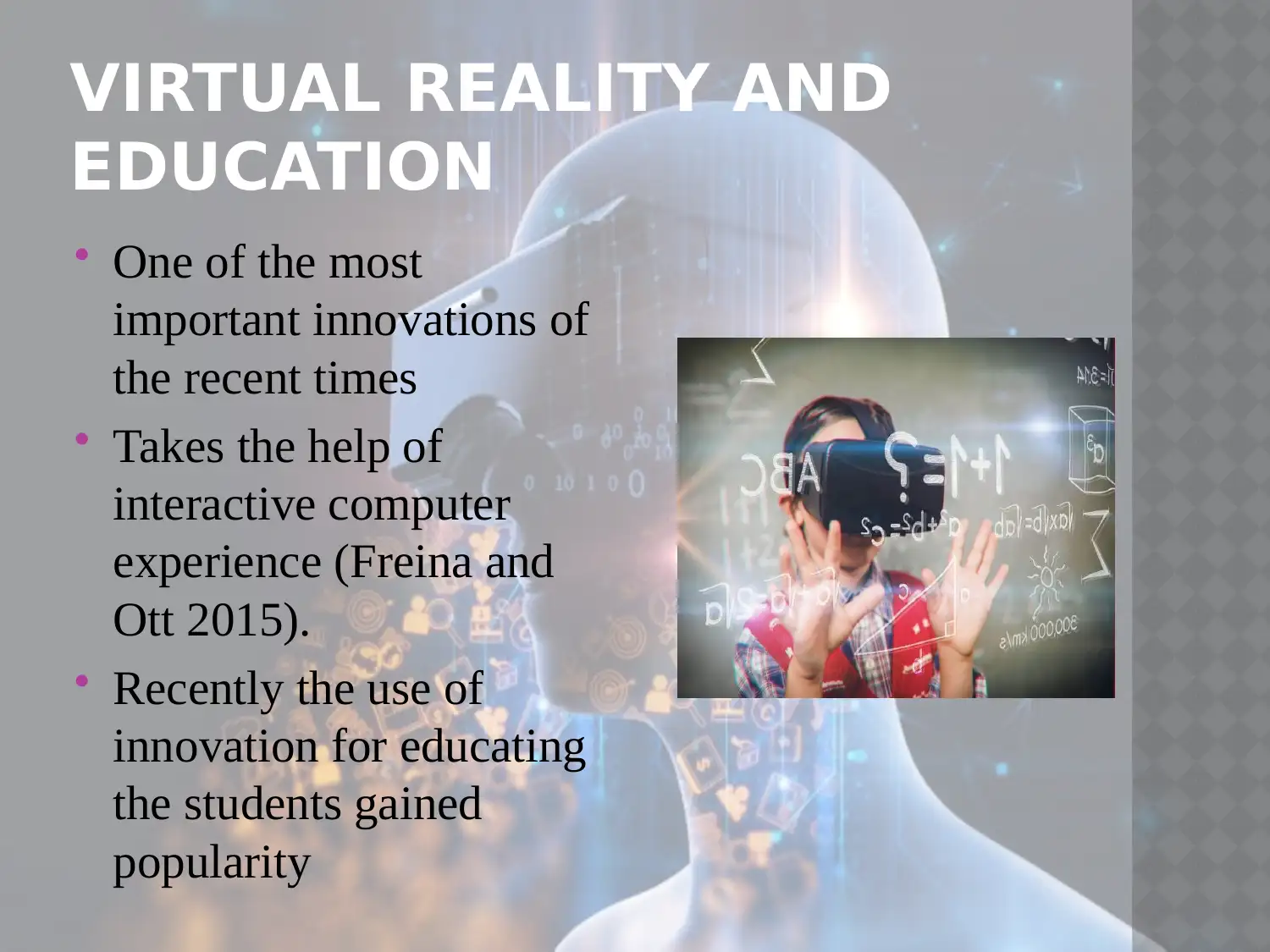
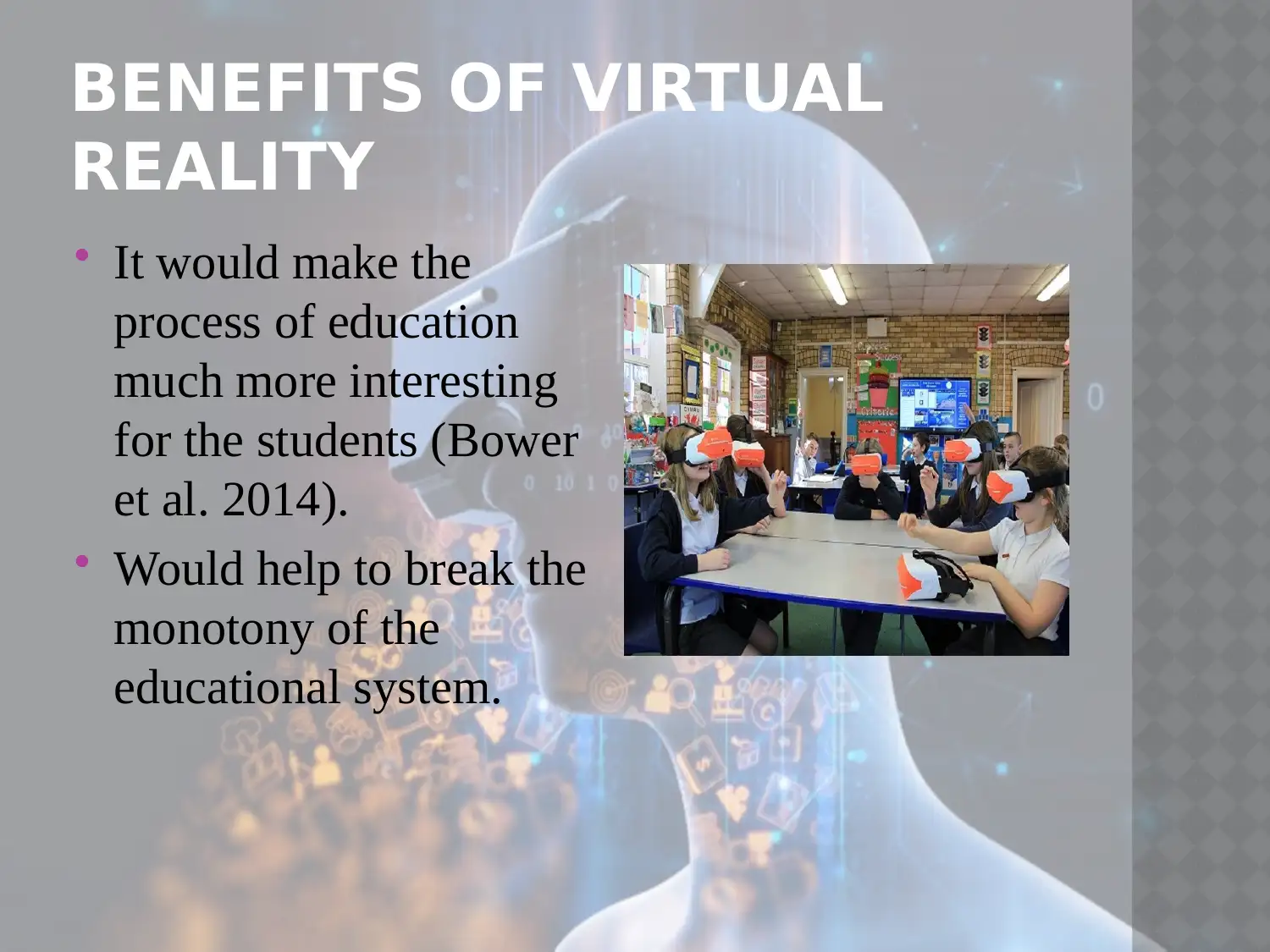

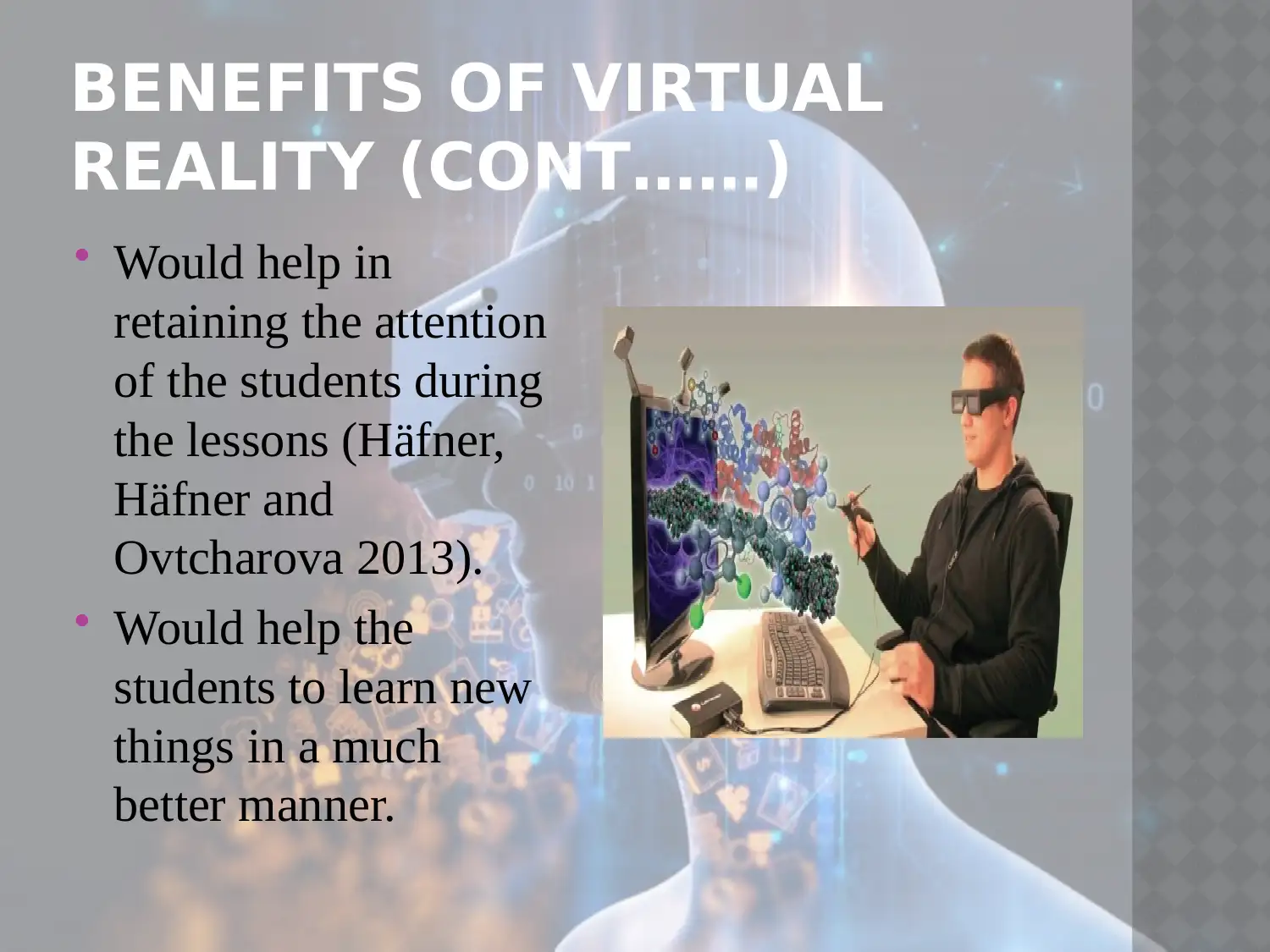
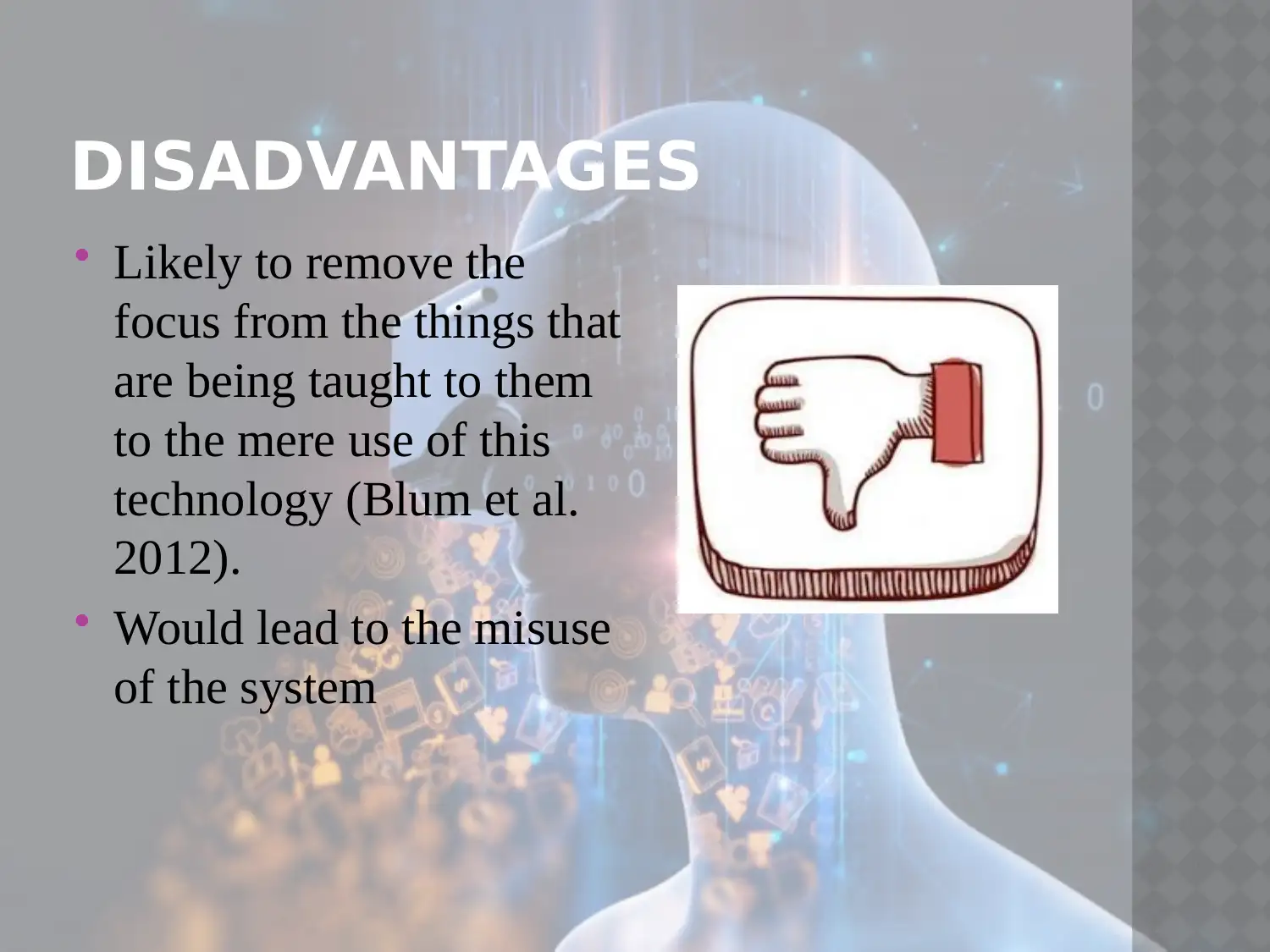
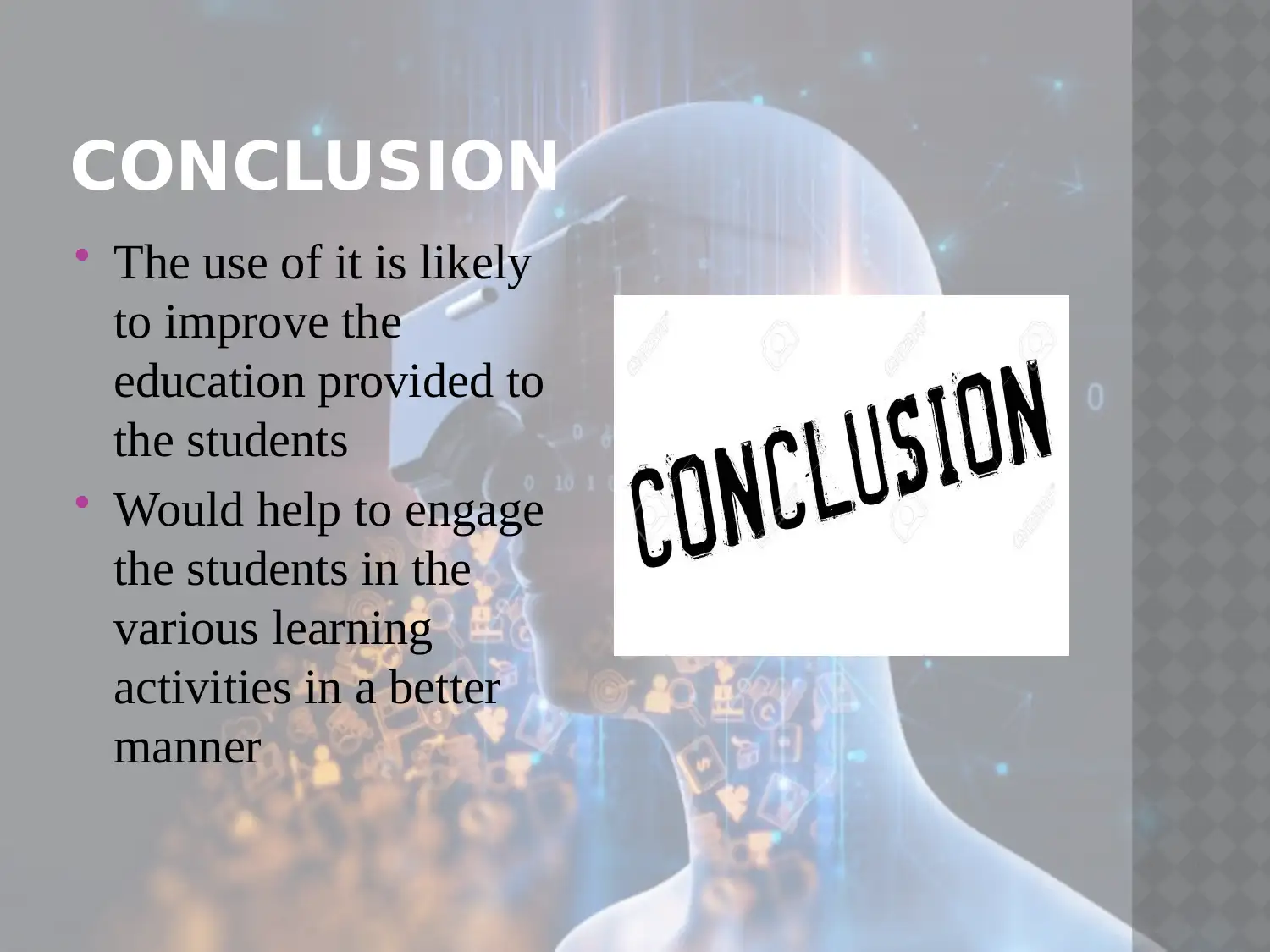
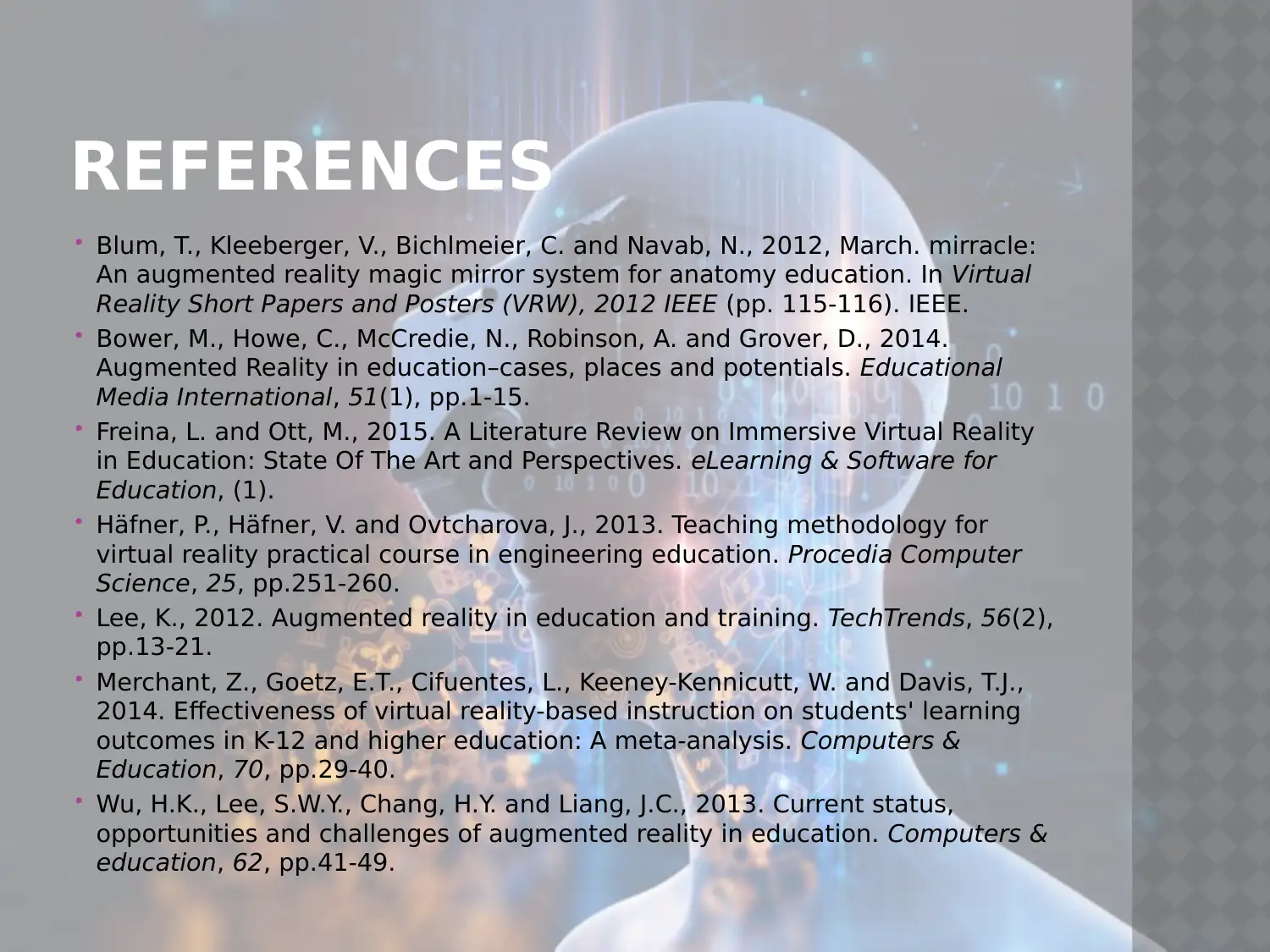
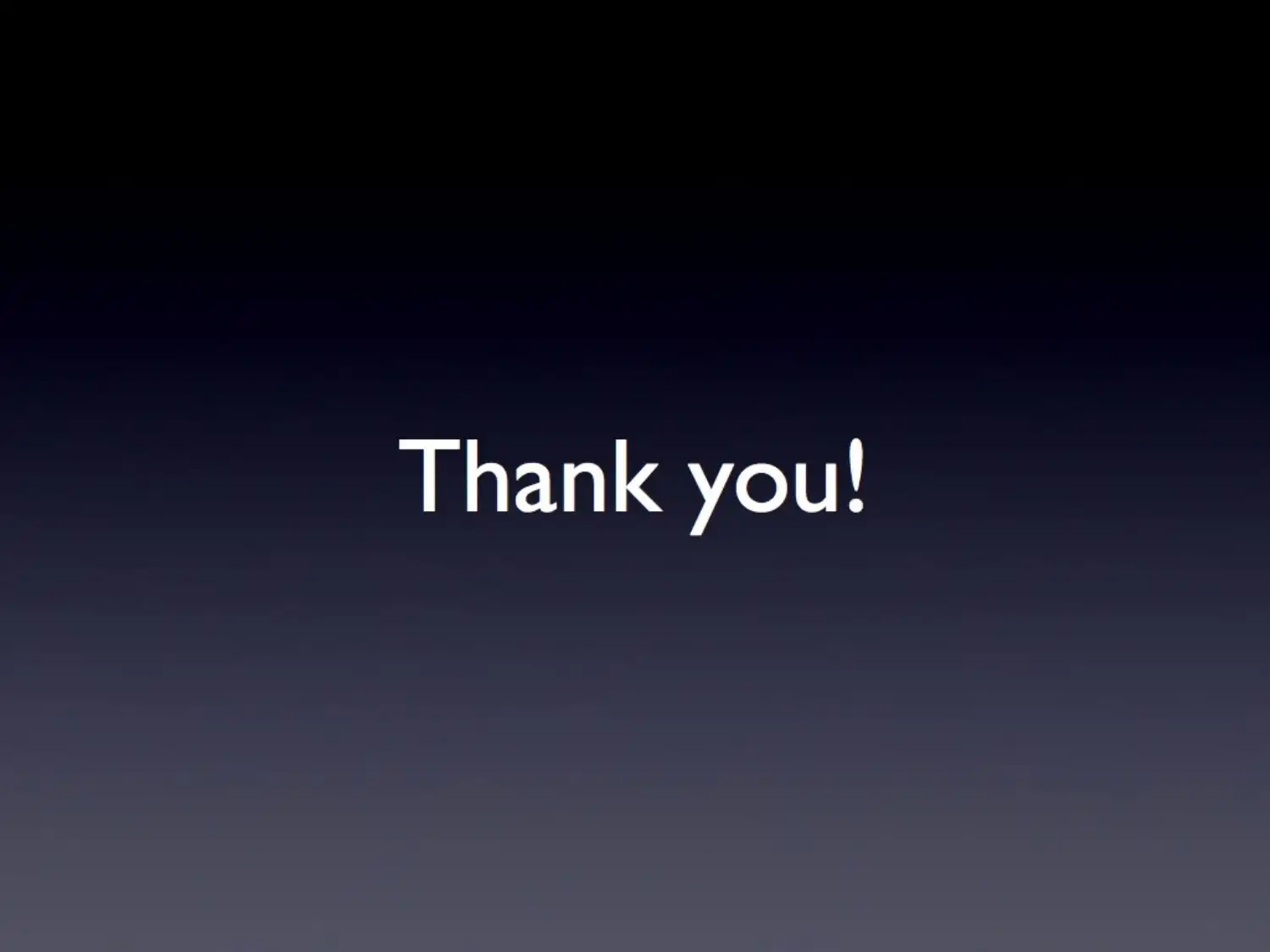






![[object Object]](/_next/static/media/star-bottom.7253800d.svg)